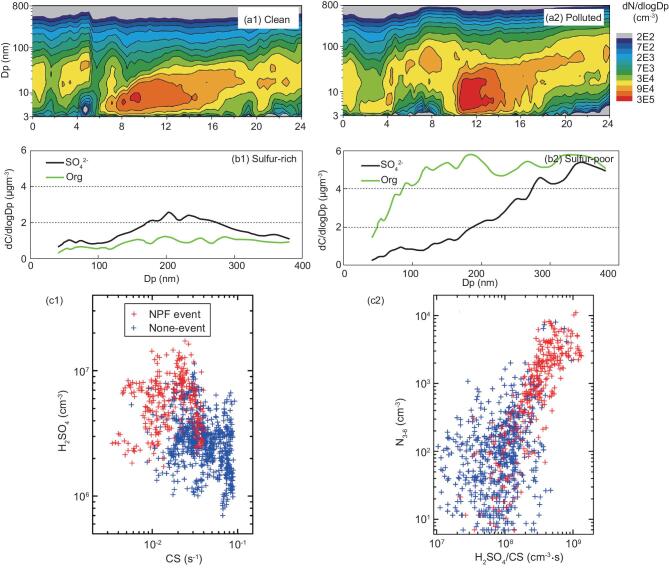Figure 10.
Typical particle number size distribution of polluted (a1) and clean (a2) types of new particle formation events observed in Beijing [62]; size-resolved mass distribution of sulfate (black line) and organics (green line) in particles during sulfur-rich (b1) and sulfur-poor (b2) particle growth events [78]; the relationships between (c1) sulfuric acid concentrations and condensation sink and (c2) the number concentration of 3- to 6-nm particles and the ratio of sulfuric acid concentration to condensation sink. The data are 10 min integrated between 08:00 and 11:00 of monitoring days during CAREBeijing2008 [72]. Data of NPF event days and Non-event days are distinguished as red and blue crosses, respectively. The NPF event was defined as: a new particle mode formed from 3∼6 nm, with higher number concentration compared with background particles; this new particle mode existed for more than 2.5 hours; the particle mode had a clear trend of growth. Days without NPF events were defined as ‘Non-event days’.

